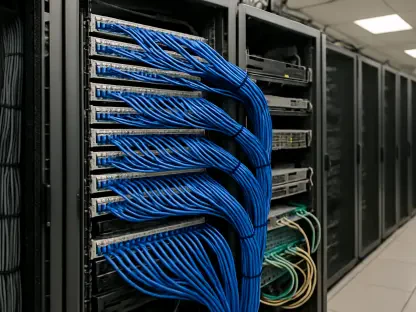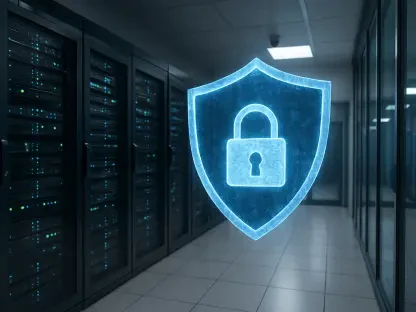As the global ecosystem of Internet of Things (IoT) devices expands, securing these devices and their respective edge networks becomes an increasingly urgent priority for enterprise IT teams. With projections estimating that there will be over 32 billion IoT devices worldwide by 2030, and a significant portion of data being generated outside of centralized data centers, the potential for security breaches continues to escalate. The sheer number of devices and the data they generate present technological and security challenges demanding immediate attention and solutions.
Inherent Insecurity of IoT Devices
One primary issue is the inherent insecurity of many IoT devices. Typically, these devices are shipped with default security settings that are left wide open, making them especially vulnerable to attacks. The problem is further exacerbated by a lack of standardized security protocols across the IoT industry. Many vendors prioritize rapidly bringing their products to market over implementing robust security measures, which leaves significant security gaps that threat actors can exploit. This predicament places the burden of securing these devices squarely on IT teams, who may not always have the resources or time needed to configure detailed security measures fully.
The onus of securing IoT devices means that IT departments need to be meticulous, but often they are pressed for time or are dealing with incomplete documentation, leading to security loopholes. Such an environment makes it easier for cybercriminals to find and exploit vulnerabilities. The fragmented nature of IoT security protocols compounds the problem, requiring IT professionals to adopt a multi-faceted approach to ensure comprehensive security without standardization in place.
Challenges in Controlling User IoT Devices
Challenges in controlling user-owned IoT devices further complicate efforts to secure networks. In many enterprises, end users, such as those in remote manufacturing plants or warehouse facilities, independently purchase and deploy IT equipment, often without the central networking group’s knowledge. These purchases may include RFID readers, smartphones, sensors, and routers, which can introduce unknown security risks to the network. The lack of central oversight leads to potential vulnerabilities and difficulties in maintaining network security until an actual security crisis occurs.
The rise of citizen IT within companies is significantly elevating security risks. Employees with little to no formal IT training or oversight are making tech decisions, frequently purchasing and integrating technologies without comprehensive security consideration. This autonomous control and use of devices expand the attack surface, making network management and security far more challenging for IT teams. These unmonitored devices not only present immediate risks but may also serve as weak points for persistent attackers to exploit over time, undermining existing security measures.
Learning About IoT Attack Technologies
IT teams are continually tasked with staying ahead of emerging IoT attack methodologies, a challenging endeavor given the rapid pace of technological advancement. Many IoT devices are not enterprise-grade, composed of outdated or weak components susceptible to breaches. The varying communication protocols used by these devices introduce continuous risks, especially when protocol security isn’t updated. This environment requires IT professionals to be vigilant and proactive in identifying and mitigating possible threats.
The task is made more difficult by the diversity of IoT platforms, many of which fail to encrypt data during transmission or at rest. Ensuring timely and consistent security updates across these platforms can be a daunting task, one that is complicated by the sheer variety of devices and communication protocols involved. The perpetual evolution of attack technologies means that IT teams must also be adaptive, learning not just from past incidents but also proactively anticipating future threats.
Adoption of Zero-Trust Networks
A promising solution to these security challenges is the adoption of zero-trust networks. Zero-trust networks facilitate meticulous tracking of all network activity and user behavior, even extending to remote edge networks. This proactive approach ensures any additions, modifications, or removals of networked devices are immediately flagged, catching potentially unauthorized changes made by end users. Such a vigilant stance can significantly mitigate risks associated with both known and unknown devices on the network.
Zero-trust networks operate on the principle that all network activities are suspect until proven otherwise. They allow for a finely-tuned monitoring system that provides real-time alerts and responses. This constant monitoring and immediate alert system ensure security personnel can respond swiftly to any anomalies, preventing potential breaches before they can cause significant damage. The adoption of zero-trust infrastructure not only fortifies security but also instills a culture of continuous vigilance within the organizations that employ it.
Educating Senior Management
Securing senior management’s understanding and support is essential for implementing robust security measures. Network managers and CIOs should take proactive steps to educate senior leadership about the critical importance of investing in zero-trust networks and other advanced security solutions for edge computing and IoT. This education is vital, as garnering senior management’s support and securing the necessary financial resources are key to effectively enhancing security measures.
Informing senior management about the potential risks and the costs associated with not investing in advanced security measures can create a compelling case for support. Demonstrating how a single breach could affect the company financially and reputationally can help in securing the needed investments. Additionally, creating a top-down approach where security is viewed as a fundamental aspect of the organizational culture encourages a more cohesive and unified effort towards securing IoT devices and networks.
Reforming the RFP Process and Adopting IGA
As the world’s ecosystem of Internet of Things (IoT) devices continues to grow, the task of securing these devices and their connected edge networks becomes a critical concern for enterprise IT teams. Forecasts predict that by 2030, the number of IoT devices globally will surpass 32 billion. Furthermore, a significant portion of data will be generated outside centralized data centers, thus increasing the vulnerability to security breaches. The enormous volume of these devices and the vast amount of data they produce create both technological and security challenges that warrant immediate and effective solutions. In essence, the expansion of IoT devices brings with it an urgent need for robust security measures to protect data and ensure the integrity of vast interconnected systems. As the situation evolves, enterprise IT teams must prioritize developing and implementing comprehensive strategies to guard against potential threats and breaches, ensuring a secure and reliable IoT ecosystem.









